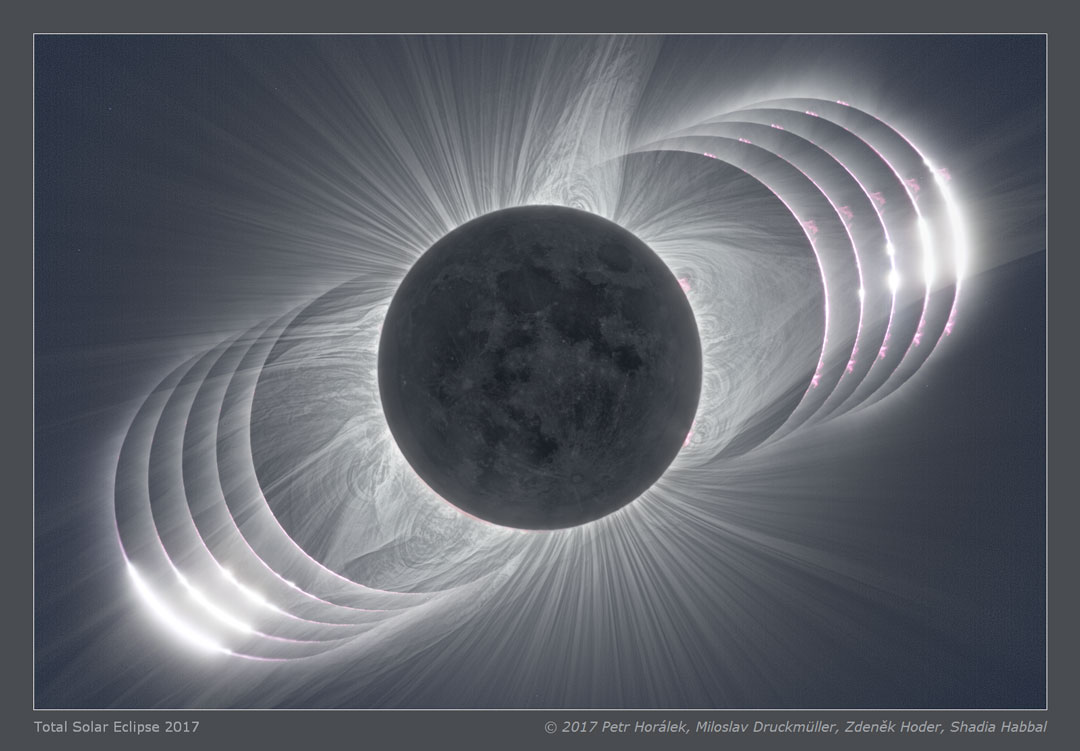2019 July 1
广袤的日冕
影像提供与版权: P. Horálek, Z. Hoder, M. Druckmüller, P. Aniol, S. Habbal / Solar Wind Sherpas
说明: 绝大部分的照片,无法忠实呈现太阳壮观的日冕。在日全食时,亲眼观赏日冕仍是无与伦比的经验。 经过调适后的人眼,能够分辨许多一般相机无法记录的日冕结构和范围。不过随着数字时代来临,情况已有所改观。这幅主题影像的中心照片,数字整合了短与长曝光影像,并且经过特别处理,以突显2017年8月日全食期间,日冕黯淡的结构与绵延的范围。影像中清楚可见的,在日冕内,有变化莫测由炽热气体和磁场交织成的复杂层状和焦散流线结构,及从太阳临边伸出的粉红色日珥环。此外,新月夜面的昏暗结构,在满相地球白画面反照的阳光之照耀下,亦清晰可辨。而在全食阶段前后数秒拍摄的影像里,得以瞥见后方的太阳以倍里珠和钻石环之姿现身。明天在南美洲的部分地区,可以见到另一个全新的日全食事件。
The Big Corona
Image Credit & Copyright: P. Horálek, Z. Hoder, M. Druckmüller, P. Aniol, S. Habbal / Solar Wind Sherpas
Explanation: Most photographs don’t adequately portray the magnificence of the Sun’s corona. Seeing the corona first-hand during a total solar eclipse is unparalleled. The human eye can adapt to see coronal features and extent that average cameras usually cannot. Welcome, however, to the digital age. The featured central image digitally combined short and long exposures that were processed to highlight faint and extended features in the corona of the total solar eclipse that occurred in August of 2017. Clearly visible are intricate layers and glowing caustics of an ever changing mixture of hot gas and magnetic fields in the Sun’s corona. Looping prominences appear bright pink just past the Sun’s limb. Faint details on the night side of the New Moon can even be made out, illuminated by sunlight reflected from the dayside of the Full Earth. Images taken seconds before and after the total eclipse show glimpses of the background Sun known as Baily’s Beads and Diamond Ring. Tomorrow, a new total solar eclipse will be visible from parts of South America.







